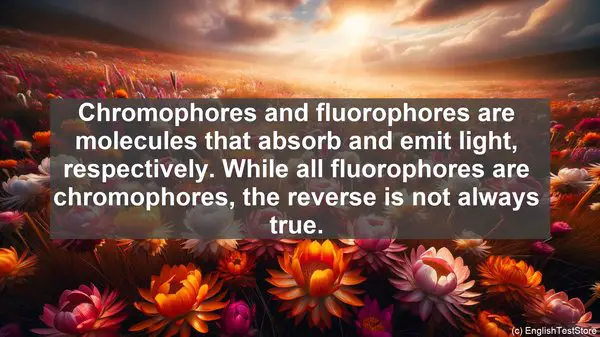Introduction: The Importance of Accurate Terminology
Welcome to today’s lesson on the top 10 commonly confused words in biophotonics. As with any scientific field, precise terminology is essential for clear communication. In biophotonics, where the study of light in biological systems is paramount, using the right words becomes even more critical. Let’s dive into our list!
1. Fluorescence vs. Phosphorescence
Fluorescence and phosphorescence are often used interchangeably, but they have distinct differences. Fluorescence is the near-instantaneous emission of light upon excitation, while phosphorescence involves a delayed emission. Understanding this discrepancy is vital in various applications, such as imaging and sensing.

2. Absorption vs. Scattering
Absorption and scattering are two fundamental processes when light interacts with matter. Absorption refers to light being absorbed and converted into another form of energy, while scattering involves the redirection of light in different directions. Both processes have significant implications in biophotonics experiments and analysis.
3. Refraction vs. Reflection
Refraction and reflection are phenomena that occur when light encounters a boundary between two media. Refraction is the bending of light as it passes from one medium to another, while reflection is the bouncing back of light. These principles find applications in various optical devices, such as lenses and mirrors.
4. Chromophore vs. Fluorophore
Chromophores and fluorophores are molecules that absorb and emit light, respectively. While all fluorophores are chromophores, the reverse is not always true. Chromophores can absorb light without fluorescence. Understanding their differences is crucial in fields like molecular biology and bioimaging.
5. Sensitivity vs. Specificity
Sensitivity and specificity are measures of a test’s accuracy. Sensitivity refers to a test’s ability to correctly identify positive cases, while specificity is its ability to correctly identify negative cases. These terms are essential when evaluating the performance of biophotonics-based diagnostic tests.
6. In Vivo vs. In Vitro
In vivo and in vitro are Latin terms that describe experiments conducted inside and outside a living organism, respectively. Choosing the right approach is crucial in biophotonics research, as it determines the relevance and applicability of the results in a biological context.
7. Confocal vs. Widefield Microscopy
Confocal and widefield microscopy are two popular imaging techniques. Confocal microscopy uses a pinhole to eliminate out-of-focus light, resulting in high-resolution images. Widefield microscopy, on the other hand, captures all emitted light, enabling faster imaging. Each technique has its advantages and limitations.
8. Photodamage vs. Phototoxicity
Photodamage and phototoxicity are concerns when working with light and biological samples. Photodamage refers to any adverse effect caused by light, such as heating or bleaching. Phototoxicity specifically relates to light-induced toxicity, often due to reactive oxygen species. Mitigating these effects is crucial in maintaining sample integrity.
9. Bioluminescence vs. Chemiluminescence
Bioluminescence and chemiluminescence are both light-emitting processes. Bioluminescence involves a biochemical reaction, while chemiluminescence is a chemical reaction producing light. These phenomena have diverse applications, from studying cellular processes to developing biosensors.

10. Photon vs. Phonon
Photon and phonon are quanta of light and sound, respectively. While photons are particles of light, phonons are particles of vibrational energy. Understanding these concepts is crucial in fields like optomechanics, where the interaction between light and mechanical systems is explored.
